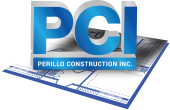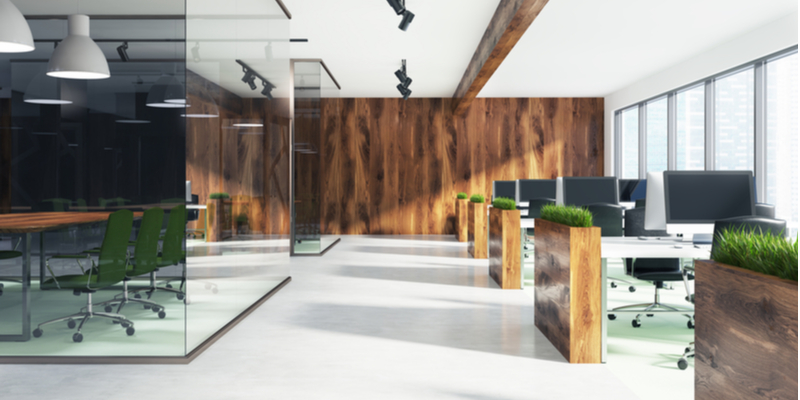You’ve likely heard the term, biophilic design, in recent days. Before making the decision whether it is right for your office remodel, let’s explore just what it is and how it can help enhance your corporate culture and improve productivity.
What is Biophilic Design?
Biophilic design is a modern approach which was developed to not only make your team members feel more “at home” while at work, but to nurture their health and wellness as well. The design approach is intended to relieve the pressures of work and create a calm, relaxing, productive culture. Biophilic design is greater than the trend of natural light and ergonomic furniture, and more about developing a healthful environment, promoting emotional, physical, and mental health in the workplace. It incorporates humanity’s connection with the natural world, essentially bringing in sunlight and views, along with natural materials, plants, and other experiential elements.
The Elements of Biophilic Design
In an office remodel or buildout, biophilic design can be included in a number of ways, from color to materials, textures to layout, with every element of the design speaking serenity, peace, and calm.
- Design Elements with Environmental Features – Biophilic design incorporates elements of the natural world directly into the office design. Think sunlight, color, air, water, plants, natural materials, and even animals. You may have seen it as living walls, natural water features, sunlight, and more. Biophilic design doesn’t limit its impact to a single or even multiple elements, but rather developing an entire habitat into the workspace.
- Natural Shapes Coupled with Geographical and Biological Themes – Biophilic design seeks to avoid sharp lines and angles, but embraces natural architectural shapes like domes, arches, etc. The goal is to develop an atmosphere which delivers the experiential perception one gains in a natural environment. Exposed natural wood elements can be used in the design as wall coverings and décor. Live plants and water features (ponds, fountains, waterfalls) add to the biophilic environment, which can be enhanced further with clear sky views, natural ventilation, and other natural elements. Some biophilic office design also incorporates animals in the workplace to increase the effect of the design.
- Natural Patterns and Rich Contrasts – In addition to natural elements, textures, patterns, and colors from nature’s diversity added to an office’s biophilic design plan evoke the environmental feel, adding complementary contrasts with nature’s richness and balance. Biophilic design works to deliver a unique balance of space, light, and natural elements, as only the natural world can.
- Building Relationships – Humans to Nature, Culture, and History – Biophilic design also seeks to evoke emotions and understand which serves to create place-based relationships. If designed well, a biophilic office environment evokes positive emotions and environmental attachment, which in turn has been shown to enhance interpersonal relationships among co-workers, and create a feeling of community. With that, team members often report greater health and wellbeing from reduced stress, decreased anxiety, even lower blood pressure, while employers note higher levels of productivity, creativity, and ultimately success.
Since the overall goal of office remodels and redesign is to enhance your employees’ work experiences, encourage employee loyalty, and increase production and business success, biophilic design may be the ideal solution, just right for your upcoming remodel. Even, if your upcoming redesign doesn’t include the budget to go fully biophilic in design, in most cases you can incorporate some natural elements to enhance your workspaces. Reach out today to the team at Perillo Construction and discover all the ways you can incorporate biophilic design into your office while staying on time, on budget, and utilizing the highest quality materials.

